

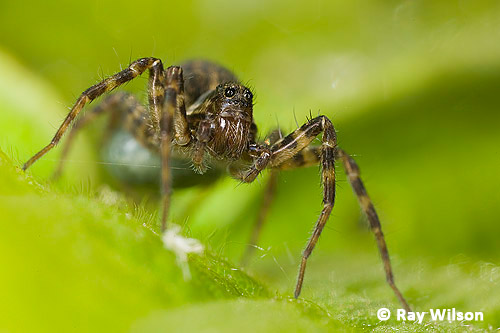
Wolf spiders are active hunters that rely on their eyesight and speed for capturing their prey. They are a large family containing over 2300 species worldwide.
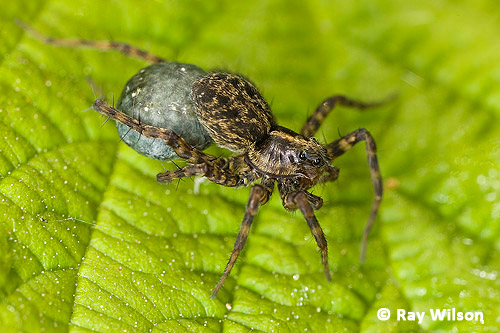
Similar to the Pisauridae, female wolf spiders carry their egg-sac slung under their bodies. An important difference, however, is that wolf spiders carry it attached to its spinnerets, whereas the Pisauridae carry their egg-sacs between their chelicerae and pedipalps.
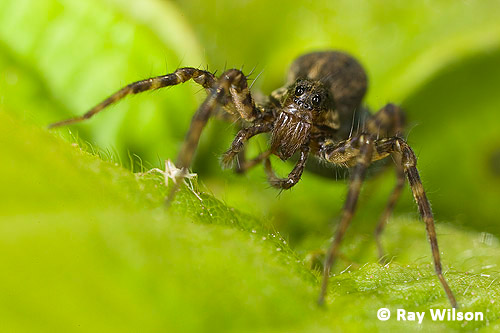
Lycosids exhibit a high degree of parental care. As well as giving their eggs protection by carrying them around with her, the female will also alter her behaviour to provide the developing embryos the best environment for speedy growth by basking in the sun to increase their temperature. She also regularly detaches the egg-sac so it can be turned to ensure equal development of the eggs, and will occassionally open up the sac and inject a fluid to keep the eggs moist. When the spiderlings are ready to hatch, the female tears open the sac and the newly hatched spiderlings climb up her legs and cling onto her abdomen where they remain for about a week.
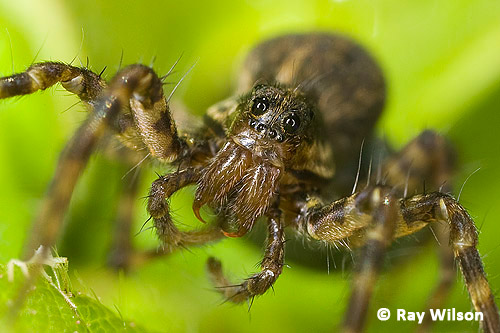
The above photo illustrates the characteristic eye pattern of the Wolf spiders. Six of the eight eyes are forward facing, with 4 small, equally sized eyes in the bottom row and two large eyes positioned above them. The final pair of eyes are located on the top corners of the head.
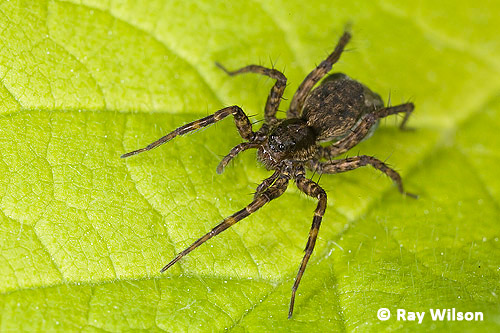
Although it is relatively straightforward to identify the British Lycosidae to genus, most cannot be certainly identified to species without microscopic examination of the female epigyne or male palps. Males are particularly difficult to identify.
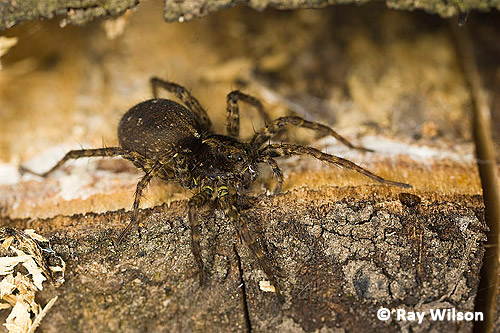
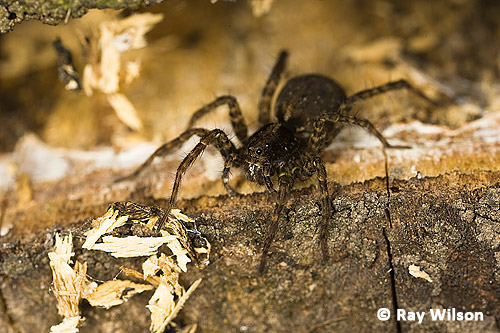
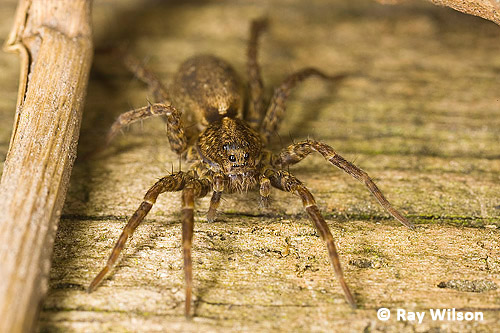
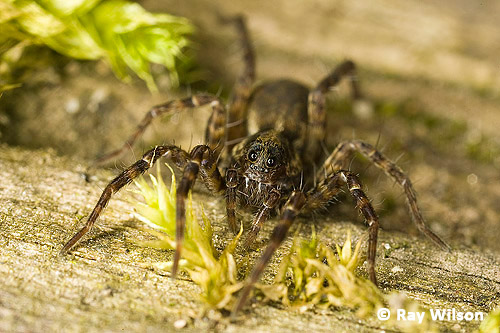
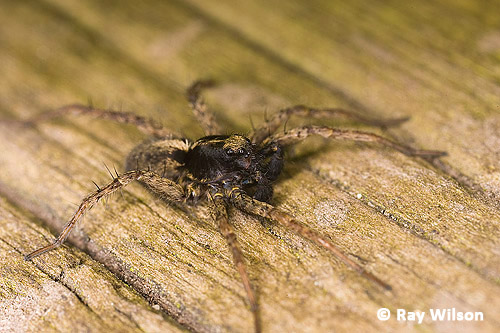
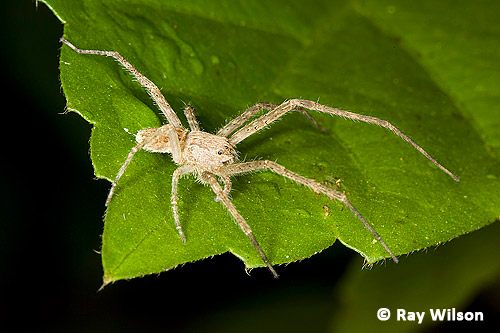
Ray Wilson owns the copyright of all images on this site.
They may not be used or copied in any form without prior written permission.
raywilsonphotography@googlemail.com